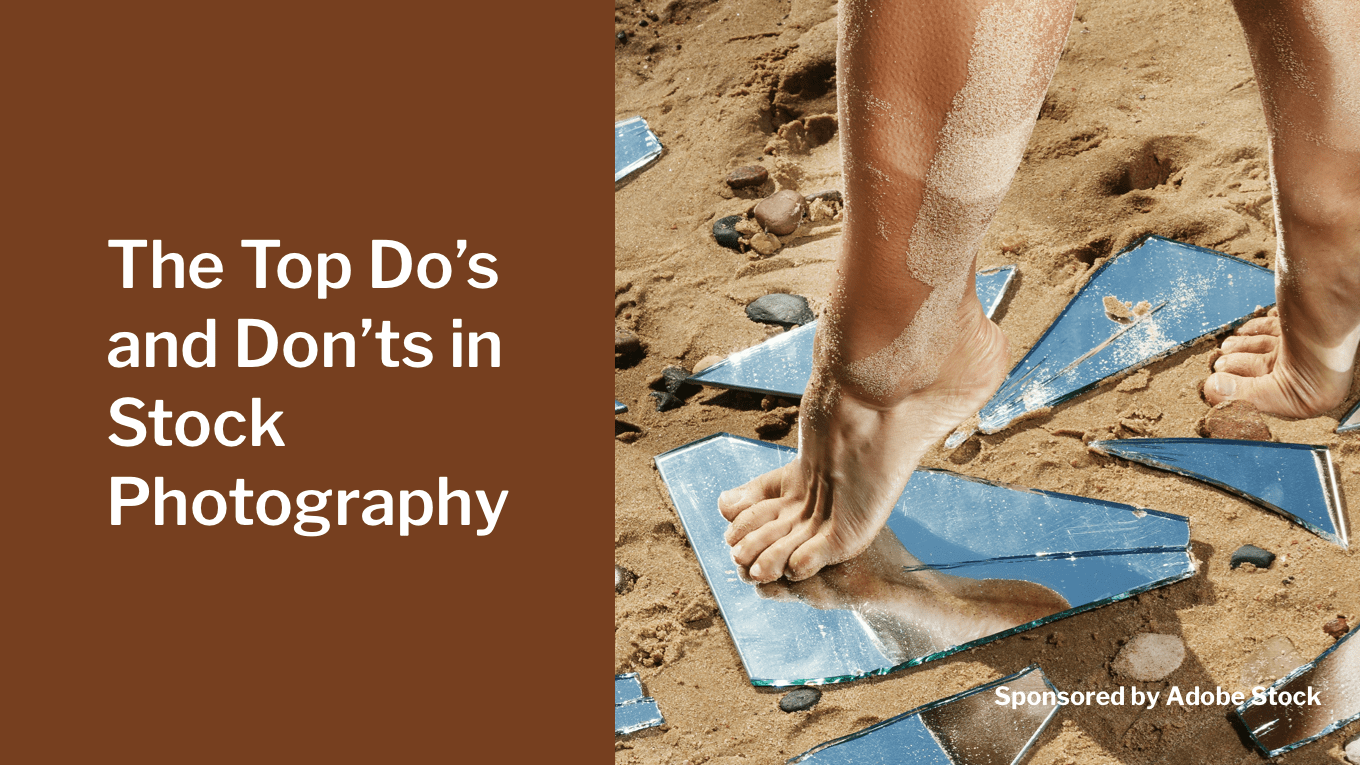There is no bullet-proof strategy to be successful on stock photography. However, there are several factors that can help or hinder your efforts. Here are the top do’s and don’ts in stock photography.
Sponsored by Adobe Stock.
Learn everything you want to know about stock photography at the Adobe Stock webinar for Cherrydeck members! Go live with Raúl Cerón, Artists Relations and Community Manager at Adobe Stock, on the 14th of April, at 6pm CET.
Top Do’s in Stock Photography
1. Be creative.
2. Look for relevant topics and models close to you. Relevant subjects are at your fingertips! From the places you visit to the ingredients you put on your plate as well as all the events that make up our daily lives, nothing is trivial when it comes to stock photography. Brushing your teeth, eating breakfast, going to work, riding your bike, etc. are all everyday actions that demand to be represented in a fresh, contemporary and authentic way.
3. In order to offer a wider choice to the customers you can mix different shots and angles ranging from wide formats to close-up and intimate portraits.
4. Keep trends in mind — You can learn more about the top visual trends for 2021 in this interview with Brenda Milis from Adobe Stock.
5. Thinking ahead is a recommended practice! Users need images to illustrate their seasonal campaigns in advance. Think about creating and uploading seasonal content a couple of weeks ahead of the season start.
6. Knowing and understanding your audience can be helpful. You can create more relevant
images when you have a specific customer persona or industry in mind (finance, tourism,
leisure, healthcare, etc.). This might also help you when it comes to finding and adding relevant keywords to reference your work.
7. Setting short and long term goals can help you stay on track. Perseverance, whether
it’s in developing your portfolio, continuing to upload regularly, or developing your own skills, is good advice and can help you progree.
8. Don’t hesitate to use the resources and educational materials that the platforms make available to you.
9. Connect with fellow photographers. Connecting and sharing your experience with other photographers can be beneficial, you can avoid mistakes and learn by asking questions to artists in the Stock community.
10. You already have a lot of images? You can always select content from your archives and upload it to your stock portfolio as long as they are relevant, not outdated and have commercial appeal.
11. Plan your first simple production for stock. There are many ways to plan and create authentic content with real emotions and a diverse casting. Put your creativity and expression to work and don’t forget to add your personal touch.
12. Stay inspired. And for that you can look at what is highlighted on the landing pages of the stock platforms. What are curators highlighting as the best of the collection?
13. Join webinars to learn best practices.
14. Pay attention into the keywording process. Referencing your images in a coherent and
relevant way is crucial and may seem difficult at first, but the experience and the tips you will find in the contributor’s guides available on the platform can help you learn how to improve this process.
Top Don’ts in Stock Photography
1. Try to skip bypass model or property releases processes. Whether you’re photographing your loved ones or professional models, in your neighbor’s yard or your friend’s shop, you need to remember to ask for permission.
2. Use client commissioned work for stock or images that show brands.
3. Quit after having your images rejected. The review process can be strict and it is never
pleasant to have images rejected. But don’t be discouraged and take this rejection as an
opportunity to learn and review the Stock image’s requirements.
4. Stop to upload more work. Stock platforms often show the most recent content first. When you stop uploading to your portfolio, others continue to add content and soon your images will drop down the search pages. Refreshing your portfolio regularly with new images can help you stay visible.
5. Lean into clichéd stock tropes. There are no cliché subjects, there are however very cliché ways to represent the timeless subjects of stock photography (like family or business). Your photographs should reflect the world we live in in all its richness and diversity.
6. Copy work from others. That’s not cool!
Contributor Insights | Stefan Dahl
Stefan Dahl is a Cherrydeck member and Adobe Stock contributor from Copenhagen, Denmark.
With a passion for commercial and stock photography production, he focuses on the capturing lifestyle, fitness and business moments. Photographing authentically and with real people is Stefan’s motto.
Top Do’s in Stock Photography by Stefan Dahl
“If you want to succeed as a stock photographer there are some things to do and some things to avoid.”
“1. Understand what fits into commercial brands and their needs. Going too artsy is something to avoid if you want to sell in volume. Look at how commercial photography is used and understand it.”
“2. The same goes with styling, makeup, and locations. Most brands need clean but authentic looks, so avoid using locations with clutter and colour pallets all over the place.”
“3. Be original, even though it is really difficult! Try to always get a commercial twist on it.”
“4. Be thorough with your keywording and descriptions. Otherwise clients can’t find your work and it will not be licensed.”
“5. Be consistent! You have to keep shooting and keep the quality high. These days there are a lot of good stock productions to compete with.”
“6. Don’t copy others’ work. First of all, it’s just not cool, and secondly, you can end up getting in trouble.”
“7. My last advice would be to give it time and work hard. Revenue comes with sales in volume, and for that you need a lot of good quality files online.”
Join Adobe Stock as a leading creative brand that values artists and puts your needs first. License your work to millions of buyers and get inspiration, market research, and strategic insights from Adobe Stock’s thought leaders to help plan your projects and guide your success. ?




